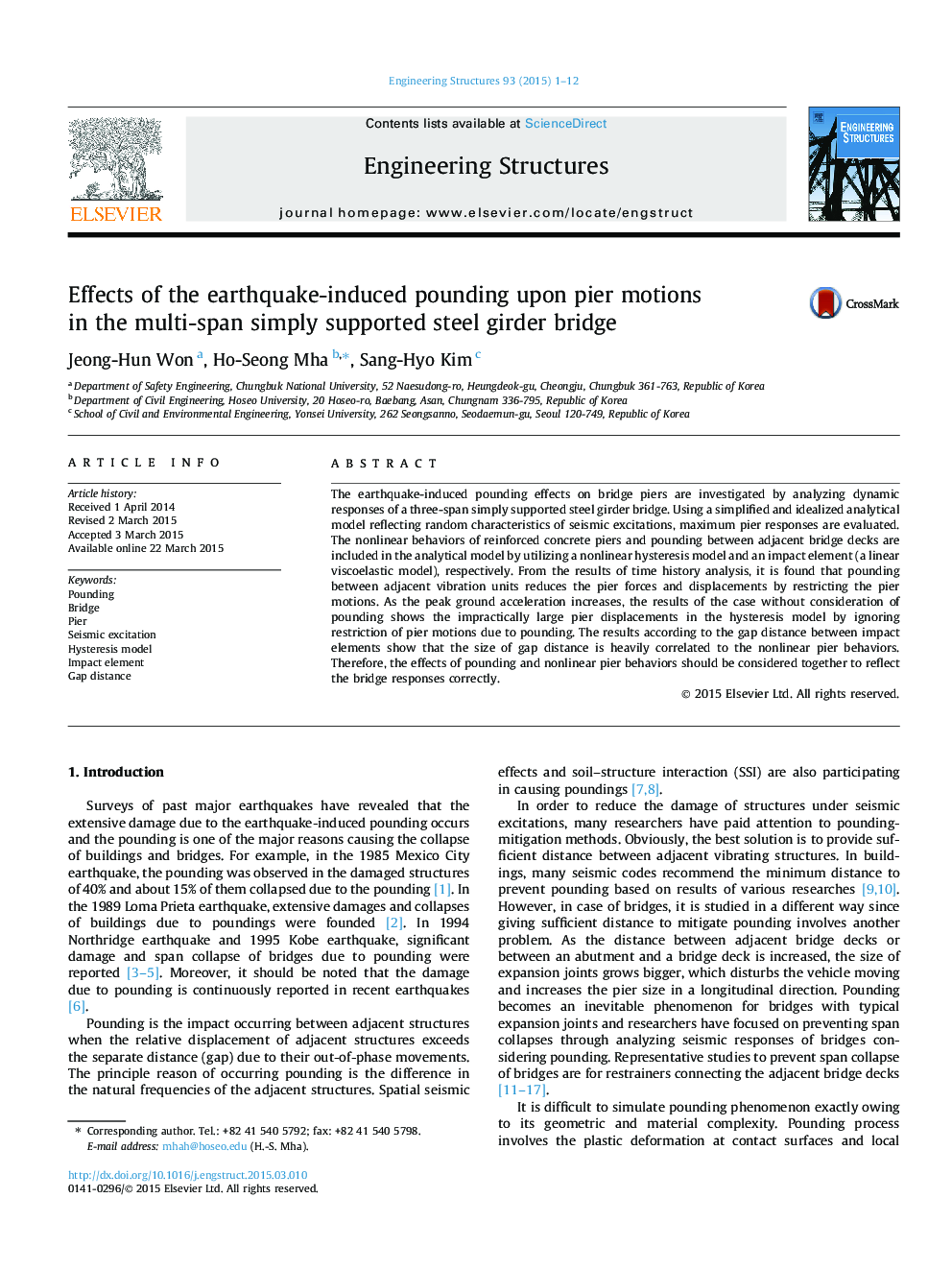| Article ID | Journal | Published Year | Pages | File Type |
|---|---|---|---|---|
| 266305 | Engineering Structures | 2015 | 12 Pages |
•The earthquake-induced pounding effects on bridge piers are investigated.•Using a simplified and idealized analytical model, pier responses are evaluated.•The nonlinear behaviors of RC pier and pounding are included in the analytical model.•The pounding and nonlinear pier behaviors should be considered together.
The earthquake-induced pounding effects on bridge piers are investigated by analyzing dynamic responses of a three-span simply supported steel girder bridge. Using a simplified and idealized analytical model reflecting random characteristics of seismic excitations, maximum pier responses are evaluated. The nonlinear behaviors of reinforced concrete piers and pounding between adjacent bridge decks are included in the analytical model by utilizing a nonlinear hysteresis model and an impact element (a linear viscoelastic model), respectively. From the results of time history analysis, it is found that pounding between adjacent vibration units reduces the pier forces and displacements by restricting the pier motions. As the peak ground acceleration increases, the results of the case without consideration of pounding shows the impractically large pier displacements in the hysteresis model by ignoring restriction of pier motions due to pounding. The results according to the gap distance between impact elements show that the size of gap distance is heavily correlated to the nonlinear pier behaviors. Therefore, the effects of pounding and nonlinear pier behaviors should be considered together to reflect the bridge responses correctly.
